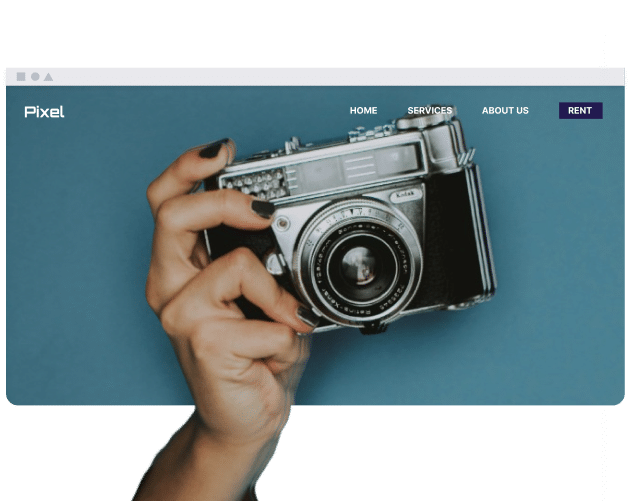Quais são os benefícios do SEO on-page para posts de blog?
O SEO On-page pode levar a:
- Posicionamento nos mecanismos de busca: A classificação afeta a visibilidade potencial.
- Maior visitação na web: Um influxo de visitantes localizando seu website por meio de uma pesquisa.
- Marketing de conteúdo e usabilidade do website: A estrutura do conteúdo pode exibir melhor organização e compreensão.
- Resultados comerciais favoráveis: A probabilidade de atingir as metas predefinidas está relacionada à seleção do público-alvo.
- Maior reconhecimento da empresa: Uma maior conscientização tem impacto na forma como a organização é percebida.
- Valor para os recursos investidos: Considerando a alocação de recursos, o tráfego não pago pode ser visto como uma estratégia gerenciável e relativamente barata.
Quais são os elementos-chave de SEO On-page nos quais devo me concentrar?
Os elementos de SEO na página para posts de blog cruciais para focar são:
- Palavras-chave: Termos que pertencem a um assunto específico e podem ser pesquisados pelos usuários.
- Qualidade do conteúdo: O conteúdo informativo deve ser divertido e perspicaz.
- Tags de título: Os títulos das páginas devem ser atraentes e ter palavras-chave relevantes.
- Meta descrições: Descrições curtas de texto que contêm uma chamada para ação.
- Títulos: Servem para organizar informações, o que pode influenciar a facilidade de leitura.
- URLs: Visam ser facilmente compreendidos e indicativos diretos de seu destino.
- Links (internos e externos): Referindo-se a outro conteúdo de texto e links para materiais.
- Otimização de Imagem: As imagens devem ser formatadas e descritas adequadamente.
- Velocidade do site: O tempo que leva para a postagem do seu blog carregar.
- Otimização para dispositivos móveis: Acessibilidade em vários dispositivos.
Esses aspectos devem ser considerados, pois facilitarão a compreensão e a apreciação do conteúdo do seu blog por mecanismos de busca e leitores; a classificação do seu blog pode ser influenciada pela omissão desses elementos.
Como otimizo os títulos e cabeçalhos das minhas postagens de blog?
Incorporar palavras-chave relevantes nos títulos e cabeçalhos das postagens do seu blog ajuda a manter a concisão, ao mesmo tempo em que promove o interesse e melhora as métricas de SEO. Isso permite que os mecanismos de busca entendam do que se trata o seu conteúdo e motiva as pessoas a visitar sua página da web. Todo especialista em SEO sabe como o título forma a primeira impressão e os cabeçalhos atuam como indicadores em todo o texto. Ao formular os títulos e cabeçalhos, considere as seguintes sugestões:
- Palavras-chave: Use frases de termos de pesquisa relevantes.
- Comprimento: Mantenha a contagem de caracteres abaixo de 60.
- Engajamento: Use palavras de ação para atrair os leitores.
- Estrutura: Organize o conteúdo em ordem lógica de H1 a H6.
Como posso otimizar o conteúdo das minhas postagens de blog para leitores e mecanismos de busca?
Ao otimizar uma postagem de blog, certifique-se de que ela seja compreensível e responda à pergunta do usuário em detalhes. A incorporação das palavras-chave necessárias também é essencial. Concentre-se nestes aspectos:
- Legibilidade: A linguagem utilizada deve ser simples e os parágrafos e frases concisos.
- Relevância: Forneça uma resposta à pergunta que o usuário tem.
- Engajamento: Use enquetes, perguntas ou chamadas para ação para iniciar a interação do usuário.
- Valor do conteúdo: Compartilhe informações que sejam relevantes e úteis para os leitores.
- Originalidade: Forneça perspectivas únicas ou insights valiosos.
- Recursos visuais: Use imagens, gráficos e vídeos para dividir o texto, ilustrar pontos e manter o interesse do leitor.
Isso permite que o conteúdo tenha uma boa classificação nos mecanismos de busca e também seja envolvente para os leitores; muitas vezes, o conteúdo voltado exclusivamente para mecanismos de busca perde valor para os leitores e vice-versa.
Por que os links internos e externos são importantes para o SEO On-Page?
Links internos ajudam a conectar várias páginas do seu blog, distribuindo link equity e melhorando a usabilidade do site para usuários e bots de mecanismos de busca. Links externos oferecem referências a fontes, que podem estar relacionadas ao valor do conteúdo para os leitores. Mantenha os links internos, pois eles fornecem instruções para ajudar os usuários a navegar no site, enquanto os links externos servem para validar afirmações com evidências adequadas.
Como a experiência do usuário (UX) se relaciona com o SEO on-page para posts de blog?
A experiência do usuário, ou UX, é muito importante para SEO na página porque os mecanismos de busca se concentram em sites que priorizam o aprimoramento da experiência do usuário do site. Desafios relacionados à navegação em posts de blog, velocidade de carregamento e formatação podem afetar a satisfação do usuário e a retenção no site, e podem influenciar como os mecanismos de busca classificam o conteúdo e, por causa disso, as otimizações de UX ajudam diretamente as estratégias de SEO, como:
- Velocidade do site: Há uma relação entre tempos de carregamento e a retenção de clientes.
- Compatibilidade com dispositivos móveis: Procura incluir todos os usuários.
- Legibilidade: A melhor compreensão incentiva taxas de rejeição mais baixas.
- Navegação: Informações bem organizadas podem afetar a velocidade com que os usuários acessam o conteúdo desejado.
Conclusão
Melhorar o SEO na página para seus posts é uma tarefa sem fim, mas contribui muito para a visibilidade online e a interação que seu blog recebe. Encontrar um equilíbrio entre SEO e a experiência do usuário garantirá que seu conteúdo importante seja encontrado pelas pessoas certas.

